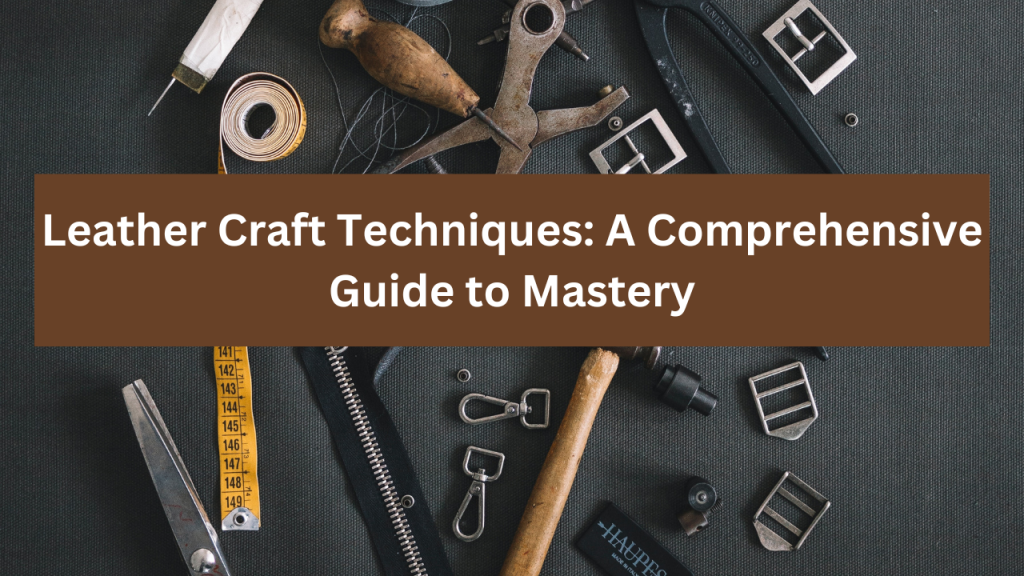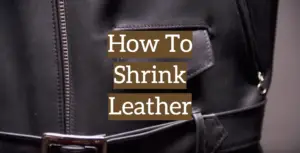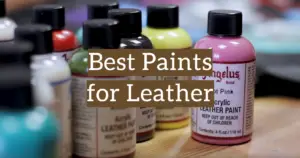
Leather crafting, a blend of history, art, and utility, has captured human imagination for centuries. This journey from basic survival needs to sophisticated craftsmanship mirrors the evolution of society itself. Let’s explore the fascinating world of leather craft techniques.
The Historical Context of Leather Crafting
One cannot appreciate the modern art of leather crafting without understanding its ancient roots. Early humans, dependent on hunting and gathering, found multiple uses for animal hides. From this necessity emerged the very first leather craft techniques.
Shoes, simple containers, protective clothing, and shelters were among the first leather goods. Each of these items required unique crafting methods. For instance, making a water-tight leather pouch involved different techniques than crafting a pair of durable shoes.
Key Materials Used Over Time
While leather itself is the primary material, many ancillary materials have played a crucial role in leather crafting:
- Sinew: In ancient times, sinew, taken from the tendons of animals, was a preferred choice for stitching leather.
- Bone: Bone tools, especially needles, were widely used in early leather crafting.
- Plant extracts: These were vital for the vegetable tanning process, offering leather its characteristic brown hue.
Evolution of Tanning Techniques
Tanning is a cornerstone of leather crafting. The techniques employed have evolved considerably, from primitive drying methods to advanced chemical processes.
Vegetable Tanning: This ancient method uses tannins from plant sources like oak or hemlock. The result is a flexible and durable leather suitable for tooling.
Chrome Tanning: Introduced in the 19th century, this process uses chromium salts, resulting in soft and malleable leather. It’s the predominant method used today due to its speed and efficiency.
Artistic Elements in Leather Crafting
As societies progressed and basic needs were met, artisans began incorporating decorative elements into their leatherwork:
- Embossing: This technique involves creating raised designs by pressing leather onto engraved plates.
- Pyrography: Also known as leather burning, this method uses heated tools to create intricate patterns and images on leather.
- Inlay and Overlay: These involve embedding a piece of leather or another material into a leather surface or layering it on top for a contrasting effect.
Modern Tools Elevating Traditional Techniques
While the essence of leather crafting remains consistent, modern tools have enhanced precision, speed, and design:
- Swivel knives: Essential for cutting intricate designs.
- Edge bevelers: These tools provide smooth, finished edges.
- Skiving tools: They thin out the leather, especially at seams, ensuring a flat, even finish.
Challenges in Leather Crafting
Every art form has its challenges, and leather crafting is no exception. Matching the right leather type with the intended product, ensuring even dyeing, and avoiding overstretching are common concerns for artisans.
Moreover, as leather is a natural product, it can have inconsistencies. Overcoming these to produce a uniform, high-quality item showcases a crafter’s skill.
Sustainability in Leather Crafting
In the modern era, there’s a growing emphasis on sustainable and ethical practices. Vegetable tanning is making a comeback due to its eco-friendly nature. Moreover, many artisans are exploring vegan leather alternatives, like mushroom or pineapple leather, integrating them into traditional techniques.
The Cultural Influence on Leather Crafting Techniques
Leather crafting techniques are not just the result of practical needs but are deeply influenced by the cultures that practiced them. For instance:
African Leather Artistry: Africa, with its vast biodiversity, has a rich tradition of leather crafting. From Moroccan leather poufs to Maasai sandals in Kenya, leather items tell stories of tribal rituals, customs, and lifestyles.
Native American Legacy: The indigenous tribes of North America displayed exceptional skill in crafting leather. Their garments, moccasins, and accessories, often adorned with beads and quills, were not just functional but symbolic of tribal identity and spirituality.
European Influence: European leather craftsmanship, influenced by centuries of wars, monarchies, and revolutions, focused on armor, saddlery, and luxury goods. Regions like Cordoba in Spain became renowned for their distinctive leatherwork, especially embossed and gilded leather.
Leather Crafting Workshops and Courses
In today’s digital age, the tactile pleasure of leather crafting is drawing more enthusiasts. Recognizing this interest, numerous institutions and artisans offer workshops and courses, ranging from beginner to advanced levels:
Local Craft Schools: Many communities have local schools offering hands-on workshops. These often focus on creating specific items like wallets, belts, or bags.
Online Platforms: Websites like Udemy, Skillshare, and Coursera offer online leather crafting courses. These are ideal for those who prefer learning at their pace.
Artisan Workshops: Many established leather craftsmen offer workshops, allowing participants to learn from someone with years, sometimes decades, of experience. It’s akin to an apprenticeship, offering a deep dive into techniques, tools, and trade secrets.
Leather Crafting’s Place in the Digital Age
At first glance, it might seem that traditional crafts like leatherwork would be overshadowed by today’s fast-paced, tech-driven world. However, the digital age has given a boost to the craft in unexpected ways:
Social Media Influence: Platforms like Instagram and Pinterest have allowed leather craftsmen to showcase their creations, drawing attention and appreciation from global audiences.
Online Marketplaces: Websites such as Etsy or ArtFire offer artisans a platform to sell their unique leather goods, providing them with a broader customer base than a traditional brick-and-mortar store.
Digital Tools: Software like Adobe Illustrator allows craftsmen to design and visualize products, enhancing precision and creativity.
The Future: Merging Tech with Tradition
The next frontier in leather crafting involves integrating technology. From laser cutting for intricate designs to 3D printing for creating molds and accessories, the future promises exciting innovations. Virtual reality might soon allow customers to ‘experience’ a leather product, feeling its texture and seeing its craftsmanship, before making a purchase.
Conclusion
Leather crafting is a testament to humanity’s desire to merge function with beauty, practicality with artistry. As we’ve seen, its techniques are shaped by history, culture, innovation, and individual creativity. It’s a craft rooted in ancient traditions yet continuously evolving, finding its place even in our tech-savvy world. For enthusiasts and professionals alike, the world of leather crafting offers endless possibilities and a tangible connection to our shared human heritage









